- This topic has 10 replies, 7 voices, and was last updated 8 years, 6 months ago by .
-
Topic
-
A little background first:My area experienced a wildfire in April, I was in contact with my representative ARES district but was not allowed to contribute due to not having completed the requisite training and background checks. I resolved then and there to get prepared and trained.I have gained training and insight in what I need to have on deployments. My dream list is longer than my budget, I still need a QRP HF rig (and my General ;D), a dual-band mobile that supports cross-band repeat and additional external power. But I figured I would go ahead and let you all in on what I have built so far and get your input if you have any.I have an old aluminum satcom box but I have serious concerns about stray RF within an enclosed metal container so I ruled it out (though I was thinking it would be a great barrier to EMP should that ever be a concern). I have been looking for a container that would work well, looking at hundreds of photos on Google Images. I kept struggling to find a solution that met my most strict initial requirement: I don't want to have to carry a 50lb go-kit 300 yards up a mountain side to work a deployment so the container has to be self mobile and I cannot take something that is flimsy.Among the planned features for the outfit are:
- Yaesu FT-7900R
- 400W Power Inverter
- 30AH AGM battery
- Perko Battery Switch
- Relatively Water Resistant
- Storage for Coax, binder, tools, adapters, meters and dummy load, etc.
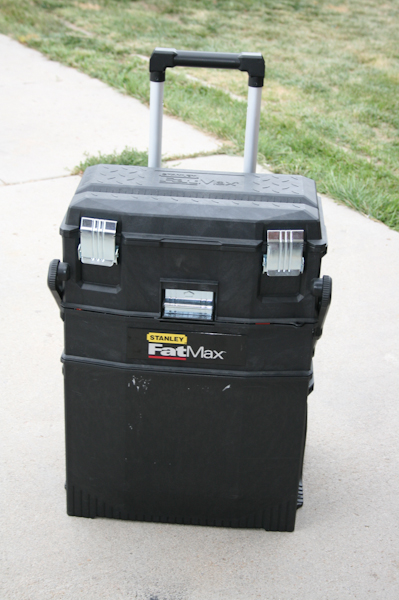
It just so happened that I was walking through my local big-box-hardware store and saw the Stanley Fat-Max toolbox. I was drawn to the large storage area, integral dolly and accordion design. The box is actually very sturdy and had considerable space for location of electrical connectors, coax bulkhead connectors, etc.
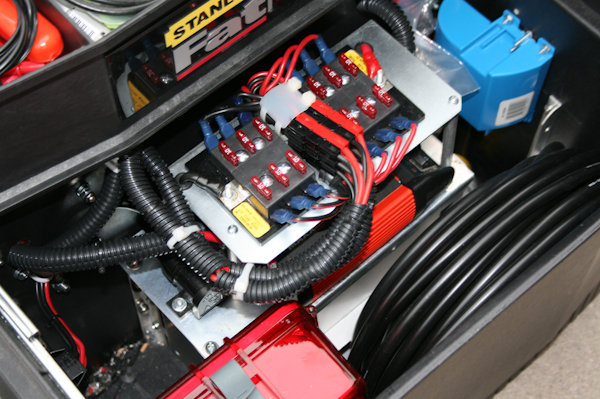
The layout of a number of design elements changed as the build progressed. It all started with an insulated aluminum enclosure for the 30AH AGM Battery. I decided that an AC inverter would be a great addition because there are occasions when AC is a necessity. Simply having the AC inside would have been enough but I decided to add an external outlet which proved to be a very easy addition. I knew the DC would have to be fused and I wanted numerous Anderson Powerpole outputs. Going overboard is a character trait of mine and I decided that fusing both Positive and Negative would probably be sufficient so two fuse blocks were in order.
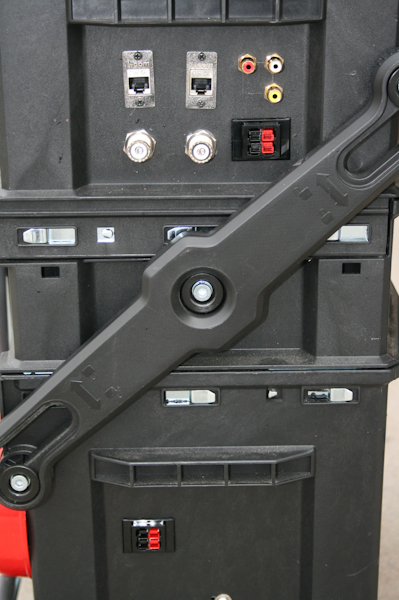
I decided to provide six power outlets, two on exterior of the bottom box, two on the exterior of the top box and two inside of the top box. In addition, I wanted to be able to operate the radios inside the top box with the lid closed (ex. in Snow or Rain) so I added two CAT-5e header connectors. The Yaesu radios allow you to jumper the Mic only or the whole faceplate using the CAT-5e header connectors which allows for considerable flexibility. Audio (external speaker/headphones) will be handled by the RCA audio connectors.
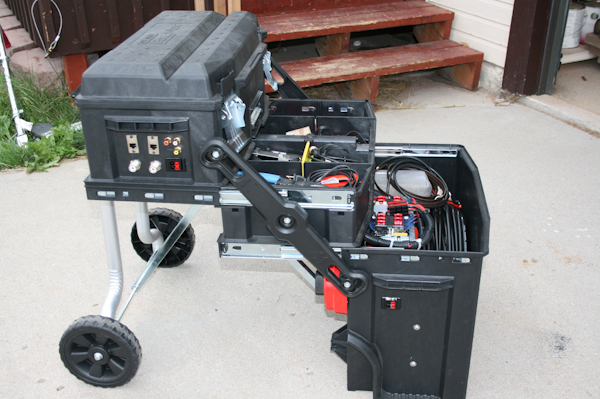
The whole case expands to enable access to the storage compartments. I am able to store a good size first-aid kit, 20m of RG-213 Coax, string, parachute cord, etc. Within the center section I am able to store tools, adapters, wire and connectors.

I am still concerned about not having an AC to DC power supply, but the best I can do for now is add a Perko battery switch with an external 75amp Anderson Powerpole connector that allows me to connect to a vehicle battery or my Deep-Cycle Marine battery that is part of my Solar generator.
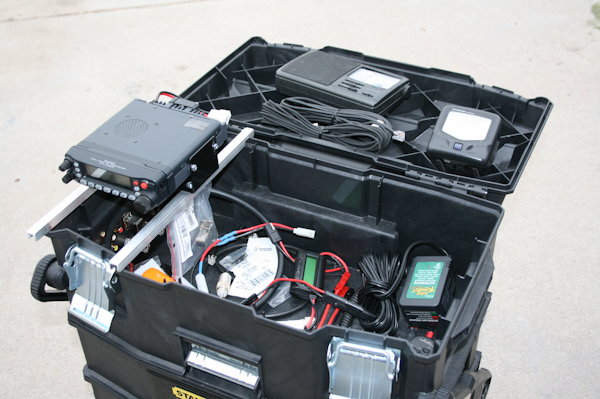
I fabbed two aluminum brackets that allow the radio to set completely within the top box, there are two notches on the back bottom edges that allow the radio to sit firmly across the opening. I added a Watts-Up meter so I can keep track of my power consumption on the primary radio. There's probably more I could add, but this has taken long enough to write-up and I want to get to bed 🙂73 to all!RobWB7SGL
- You must be logged in to reply to this topic.
